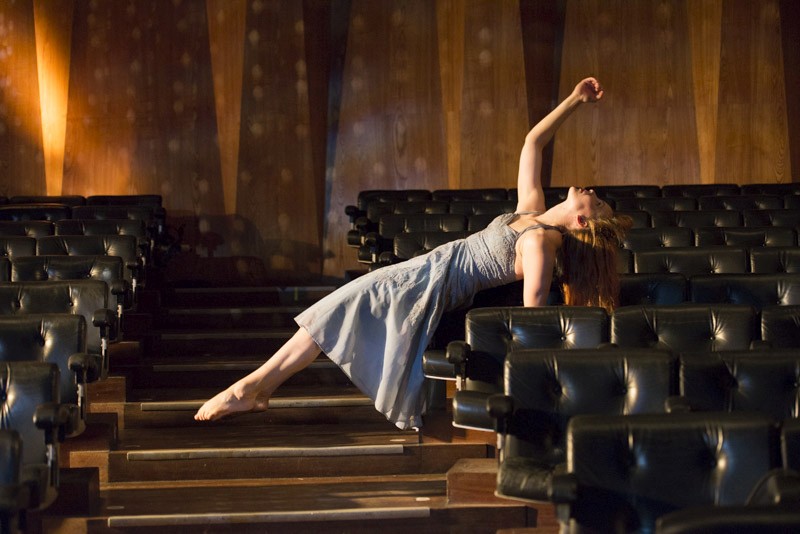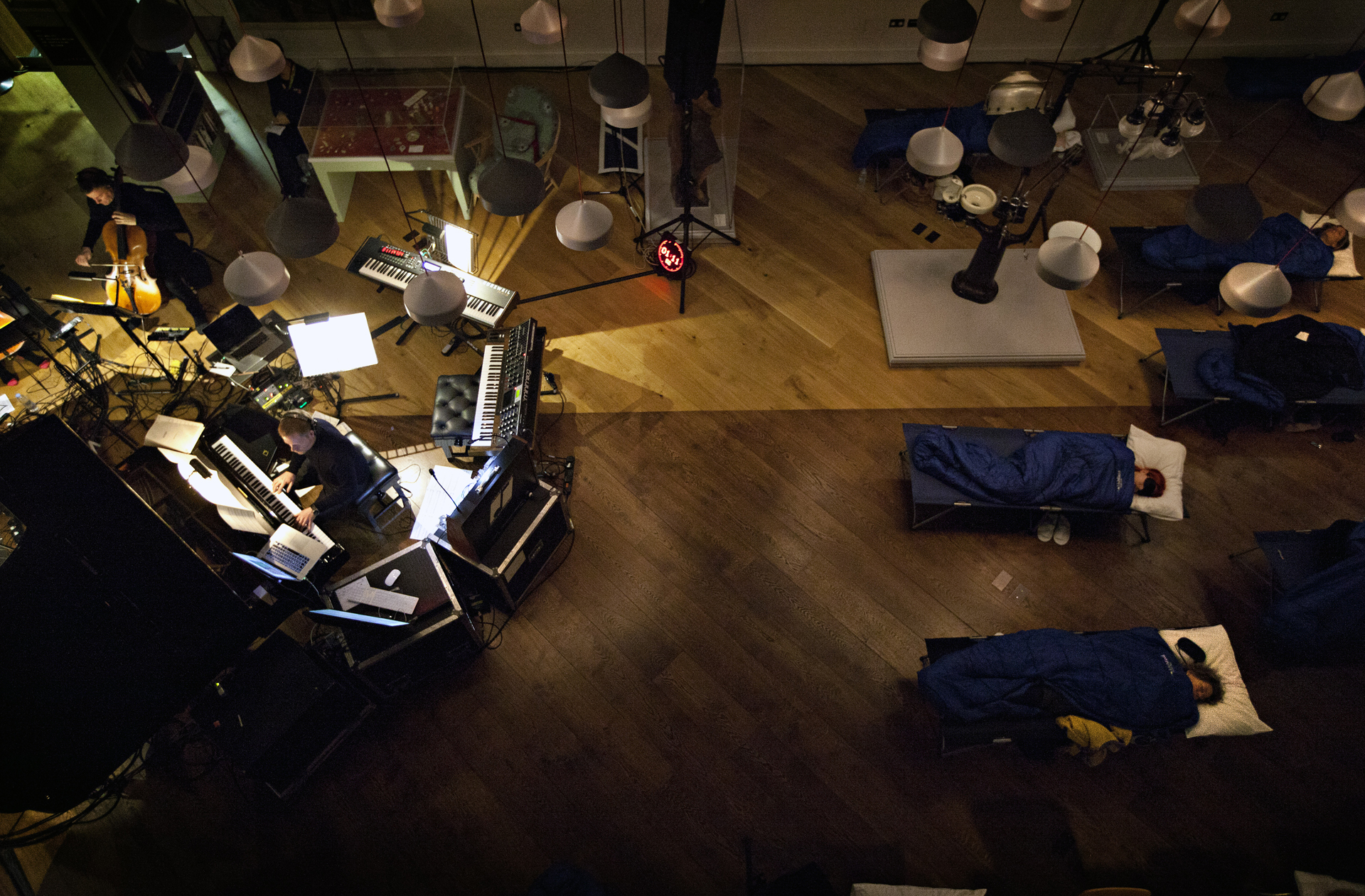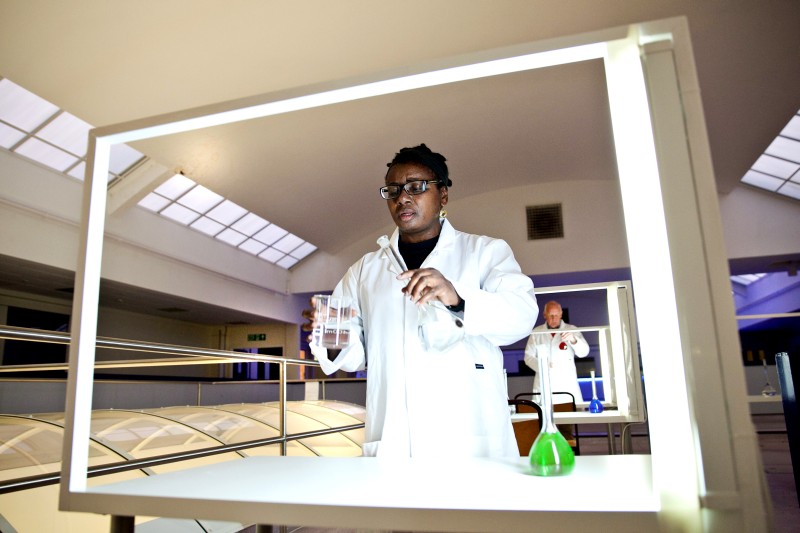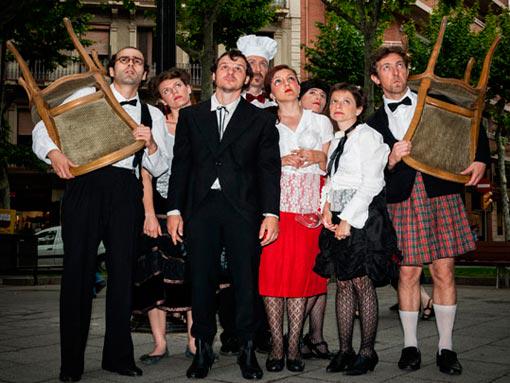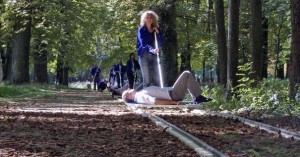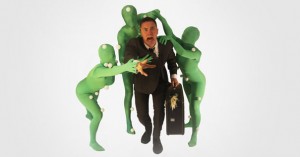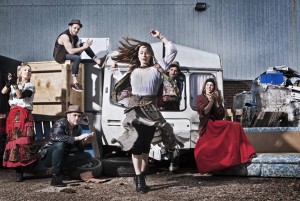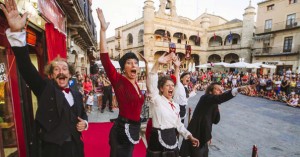Max Richter’s groundbreaking night-long lullaby is experienced from a camp-bed on-site at The Wellcome Collection Reading Room by Rebecca Nice, and from her own bed at home via Radio 3’s live broadcast by Dorothy Max Prior
Rebecca Nice writes:
British contemporary music composer Max Richter’s latest project Sleep formed the afterhours highlight of BBC Radio 3’s Why Music? weekend, physically uniting live performance with site in The Wellcome Collection’s Reading Room. Why Music? saw a myriad of performance, forums and free events given at this multi-disciplinary centre for medicine, art and life which paralleled Radio 3’s broadcasting in current debate on neuroscience, psychology, language, memory, wellbeing and their relationship to music.
Sleep is an eight hour piece of music composed by Max Richter in consultation with neuroscientist David Eagleman. It is designed around a full eight-hour sleep cycle and was performed from midnight to 8am the next morning as a world premiere, the first time the ‘lullaby’ (as Richter describes it) has been performed for the full extended eight hours. Sleep is both a product of, and a catalyst for, an exploration into states of consciousness and sleep and how the mind in its various states interacts with sound. As the Radio 3 presenter warns Richter not to ‘fall victim to his own sleeping draft’, I consider that perhaps this music is about more than merely sending people off to the land of nod.
In quiet anticipation and careful consideration of people and place, a community of ‘Sleepers’ formed by competition winners, press, Wellcome and production staff tiptoe into the Reading Room. Twenty uniform camp-beds dressed with a white pillow, a blue sleeping bag and an eye mask for each Sleeper are arranged in rows amongst the bookshelves, relics and installations of the Wellcome Collection’s Reading Room. Wandering through the eclectic mix of installations, past a 1920s x-ray machine, to a bed set before two pre-programmed keyboards and a Trident dental station, it becomes clear that the lines between exhibit and viewer, performer and audience, doctor and patient, scientist and subject, are not just blurred but entirely broken.
As the Sleepers settle into place, and onto display on our demarcated camp-bed plinths, Max Richter enters with five musicians to inhabit their lair of instruments. Steve Morris and Natalia Bonner (violins), Reiad Chibah (viola), Ian Burdge and Chris Worsey (cellos) are framed by the grand red carpeted staircase leading up into the gods, and single soprano Grace Davidson in the gallery above. Richter sits at a grand piano surrounded by keyboards and electronic equipment. He briefly states that listeners’ are ‘interacting by inhabiting it’, to the Radio 3 audience catching it live from their bedrooms all over the country.
It soon becomes apparent that rather than inhabiting it, the piece inhabits me. By laying myself vulnerable to the soundscape and landscape of the site, my body reverberates with the same waves as its surrounding architecture. I become a small part of an enlarged speaker that throbs in the centre of the building, a vessel through which sound travels. I am grounded, quite literally, by its vibrations.
12.00 I sit up, marvelling at the spectacle of a music concert at the foot of my bed and notice the connection between Richter and his musicians, counting and cueing each other through their own system of signals. I share their satisfaction as they connect and smile and their anticipation as they overcome situations with timing, unpredictable instruments and noise pollution from the world outside. Chords of steady dinosaur steps lead me on journeys as top notes take me around corners and over hills.
12.05 Muffled piano notes are all encompassing, the air inside and out of my body is filled, a siren reminds me how comfortable I am inside my sleeping bag even though I have the sense of being watched. Strings accompany the tortured souls in the paintings to my right. Grotesque figures thrive and grimace in the 18th century oil painting A Blacksmith Extracting a Tooth. But I seem to float like Marc Quinn’s sculpture Free, a baby that hovers on a plinth below.
12.15 Three musicians descend the stairs like gods from Olympus or angels from the highest level of an altar piece. They are visiting, working their miracles on humanity as we sleep. A steady even beat, a reverberating pace is constant, safe and comforting.
12.20 Tremors build in intensity, a chorus of sleeping bags rustle. I succumb to the sway to Richter’s upright back, he is my conductor, I lay down beneath his command and occasional gaze.
12.40 A horizontal audience startles at an angel humming from the gallery above a she treads the names of the greats: thirty physicians and scientists from Aristotle to Paracelsus, listed by Henry Wellcome.
12.45 I seem to hear pipes, through my ears, through my bed into my bones.
12.50 I am overcome with weight and tiredness, time slows down. The sound feels the same but different, a constant of variations and repetitions.
01.30 The sound is so loud that there is no escape. I can feel an entire orchestra through my skin, my muscles, my body.
I sleep sporadically, I see in: 02.15 02.40 03.20
04.00 My brain is pierced by a whisper up in the gallery behind, so cutting, so insulting. I realise that my sense of hearing is so heightened during sleep that I am acutely aware of every breath, turning page, click of a camera in the room.
05.00 06.00 07.10 The sound is the same but different. A new sky, a new world outside tells me more significant time has passed. A glowing pink and golden sky matches the glow of Richter’s sheet music under his lamp. I am reminded of the golden haze created in cathedrals assigned to God’s spirit. And a musician becomes a deity.
08.00 The same but different, the pulse of the night reaches a quiet crescendo. A sleepy minority miss this entirely but the majority are ready if not yet alert. I am spotted by a musician, as I it up bleary-eyed, dishevelled and transfixed. This feels increasingly intimate and yet I have been beneath this gaze all night.
My night is chaotic and intense with moments of bliss beside moments of invasion as my sleep-deprived body searches for a way through the noise to unconsciousness. On my way back from the bathroom I make my discovery. Walking down an isle of sleeping figures, watched over by what felt like a choir of angels surrounded by a golden glow in the dark was a moment of peace, bliss and awe. Returning to my bed I embodied the darkness, noise and torment of a beautiful sound in overabundance and incredibly high volume.
There is a placement and separation of our roles as clear as a religious Renaissance painting. The inner sanctum of Richter’s musicians circled by instruments are central and form a channel of intercession between the Sleepers and the gallery. The grand, wide staircase frames and leads the musicians to the gallery of angels’ voices above where the soprano soloist hovers. Rows of camp beds circle the core with a sprinkling of artefacts, and in turn are surrounded by an outer circle of officials and photographers in constant orbit. Through immersive performance, a reciprocal relationship between Sleeper, Musician, Invigilator and Photographer is made and developed. Each role in this performance watches the other, either officially or unofficially. How and whether the Sleepers slept was watched and documented and in turn the Sleepers focused entirely on Richter’s soundscape which protected us under their gaze. For all who enter the Reading Room there is no escaping an enveloping, encompassing experience transformed by the various levels of immersion in both the site and the Sleep experiment. How we measure or quantify a subconscious mind remains a mystery but I wonder what spell Max Richter’s dark lullaby cast as my strange abstracted night turns into morning.
Dorothy Max Prior writes:
I often fall asleep to Radio 3 – I rarely see out Late Junction and usually ending up turning the radio off in the middle of the night. So Saturday 26 September saw nothing unusual in my bedroom. By 11pm I was snuggled under the duvet, with the radio on fairly low, listening to the showcase of works by new contemporary music composers that preceded Sleep. As is my wont, I fell asleep before midnight – so I missed the start of the Max Richter piece, it just merged into the previous broadcast in my dream state.
I was rudely awakened an hour or so later by a high-pitched cry. I’ve raised three children – all breastfeed longterm, so I was the main carer at night for a decade – and for a moment I was thrown back into those memories. We are programmed to respond to high-pitched sound – the mother tuning in to the sound of the small creature’s cry, whether she is asleep or awake, a strong part of the survival mechanisms for any mammal. It took me a minute or to to realise that I was listening not to a baby but to a soprano female voice – a high, angelic note. Lullaby? I thought grumpily – I don’t think so. Reports from the live experience at The Wellcome Collection seem to chime with my experience – the entry of the human voice into the proceedings causing a new alertness to many who had just dozed off. Richter is an intelligent man, knowledgeable about the power of music to affect people, and working with a neuroscientist, so I can’t help but feel that he knew this would happen!
I shuffle to the bathroom, return to the bedroom and go to turn the radio off – then realise I mustn’t, so turn it down a notch. The voice stops. The music becomes more ambient, consistent tones without highs and lows. That’s more like it! But then I’m awake again – a melodic piano line is too invasive to sleep to. It subsides into a pleasant drone. I doze. Time passes. The voice comes back. It wakes me up again, and I remember thinking it sounds like a mournful ghost trapped in the machines. It goes away. The ambient mode returns, for which I’m grateful. I doze. I sleep. No doubt I dream, but when I wake I can’t remember my dreams. Which is odd, as usually I do. I feel very tired, and suspect that I haven’t really slept much at all…
I wake fully at 7am, which is usual for me. I listen to the last hour, and enjoy it, but am a little puzzled. I’d have expected 7am to 8am to be a waking-up cycle, and it doesn’t strike me this way. The conclusion of the piece feels very low-key, rather than something that brings people back into wakefulness.
If providing music appropriate to different states of mind at different hours of the day and night was the intention, then Richter would have done well to listen to the Indian Ragas created for specific hours (a 7am raga would be quite upbeat!). It should also be noted, from the site-responsive perspective, that Sleep, although a record-breaker for live music broadcast, is not the first artistic sleep-over that puts its audience to bed. Duckie’s Lullaby is that very thing (presented at Circus Space at least a decade ago, and revived at the Barbican in recent years). And around about the same time, Fevered Sleep created a lovely piece called Once in a Blue Moon, staged at Battersea Art Centre, in which parents and carers got put to bed whilst children roamed the arts centre, which had been transformed into a magical world of talking bears and ice sculptures…
On reflection, I feel that Sleep was an interesting experiment, but if it was indeed intended as a lullaby, a glorious failure. It was impossible to sleep through, with its changes in tone and pitch, and its marked highs and lows. It stimulated and roused the brain, rather than soothing. It is impossible to separate out a critique of the music from the staging of this live event and broadcast – and indeed, if it wasn’t staged and broadcast live in this site-responsive manner, its audience invited to sleep through it (either there in person or in their own beds), Total Theatre wouldn’t be covering it.
I’ve listened again to some sections since the live broadcast, and I like the piece a lot better from the perspective of an awake, responsive listener than I did as an at-home Sleeper. The music itself, as an eight-hour cycle reflecting artistically on the process of sleep and dreaming, rather than being something to sleep to – does stand up. It is, ultimately, a piece about sleep, not a piece to sleep to.
Footnote:
Sleep was performed live in the Wellcome Collection Reading Room by composer Max Richter (piano, keyboards and electronics) , Grace Davidson (soprano), Natalia Bonner and Steve Morris (violins), Reiad Chibah (viola), Ian Burdge and Chris Worsey (cellos) beginning at midnight on Saturday 26 September 2015 and ending at 8am on Sunday 27 September. The single continuous piece was broadcast live on BBC Radio 3. This was the first time the piece had been performed in front of an audience, and it has been announced that this event has entered the Guinness Book of Records as the longest live broadcast of a single piece of music.
It was presented under the auspices of Why Music?, a partnership between BBC Radio 3 and Wellcome Collection. Asking the question Why Music?, leading musicians have been joined by authorities in the fields of neuroscience, music therapy and music psychology for the three-day programme of live and recorded broadcasts exploring what makes music a vital part of being human. Why Music? broadcast live from BBC Radio 3’s popup studio at The Wellcome Collection, 25-27 September 2015.
The Wellcome Collection in London’s Euston Road is part of the Wellcome Trust, a global charitable foundation dedicated to improving health.
 A House Repeated is a video game stripped down to its framework of commands and voice prompts. But these are described and narrated by Seith Kriebel and a female performer, who personify a virtual and specific site, revealing a fantastical imagined world based on Battersea Arts Centre itself. The duo divide the audience into two teams who sit opposite each other in a minimally dressed studio. Running two stories in parallel, the audience (who never leave their seats) visualise their tour with the guidance of Kriebel’s concise descriptions. Each performer takes turns to offer their team a description and three options to navigate a journey until they find each other in the same room and are transported into a re-arranged plan. The battling teams then shift to share the narration with Kriebel, playing with the second performer who becomes our protagonist in the hot seat. As an audience of immersive theatre, indulging in vivid descriptions – from a witch’s hut to a man in a tower with a hundred eyes who never sleeps – becomes quickly over-shadowed as the piece turns into a fast-paced game. The descriptions themselves are rich and inconsequential, forming a diversion from the journey towards a mysterious goal that half the audience seem to already understand.
A House Repeated is a video game stripped down to its framework of commands and voice prompts. But these are described and narrated by Seith Kriebel and a female performer, who personify a virtual and specific site, revealing a fantastical imagined world based on Battersea Arts Centre itself. The duo divide the audience into two teams who sit opposite each other in a minimally dressed studio. Running two stories in parallel, the audience (who never leave their seats) visualise their tour with the guidance of Kriebel’s concise descriptions. Each performer takes turns to offer their team a description and three options to navigate a journey until they find each other in the same room and are transported into a re-arranged plan. The battling teams then shift to share the narration with Kriebel, playing with the second performer who becomes our protagonist in the hot seat. As an audience of immersive theatre, indulging in vivid descriptions – from a witch’s hut to a man in a tower with a hundred eyes who never sleeps – becomes quickly over-shadowed as the piece turns into a fast-paced game. The descriptions themselves are rich and inconsequential, forming a diversion from the journey towards a mysterious goal that half the audience seem to already understand.
